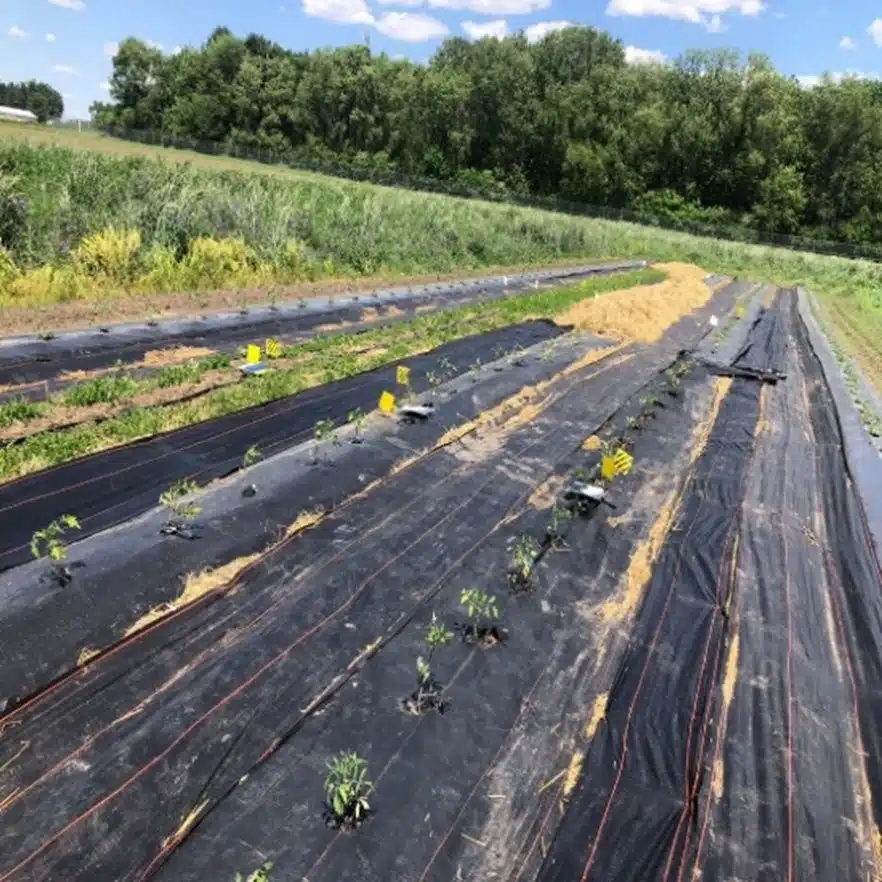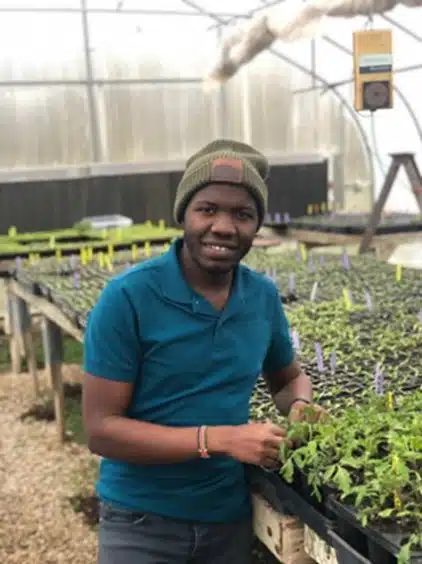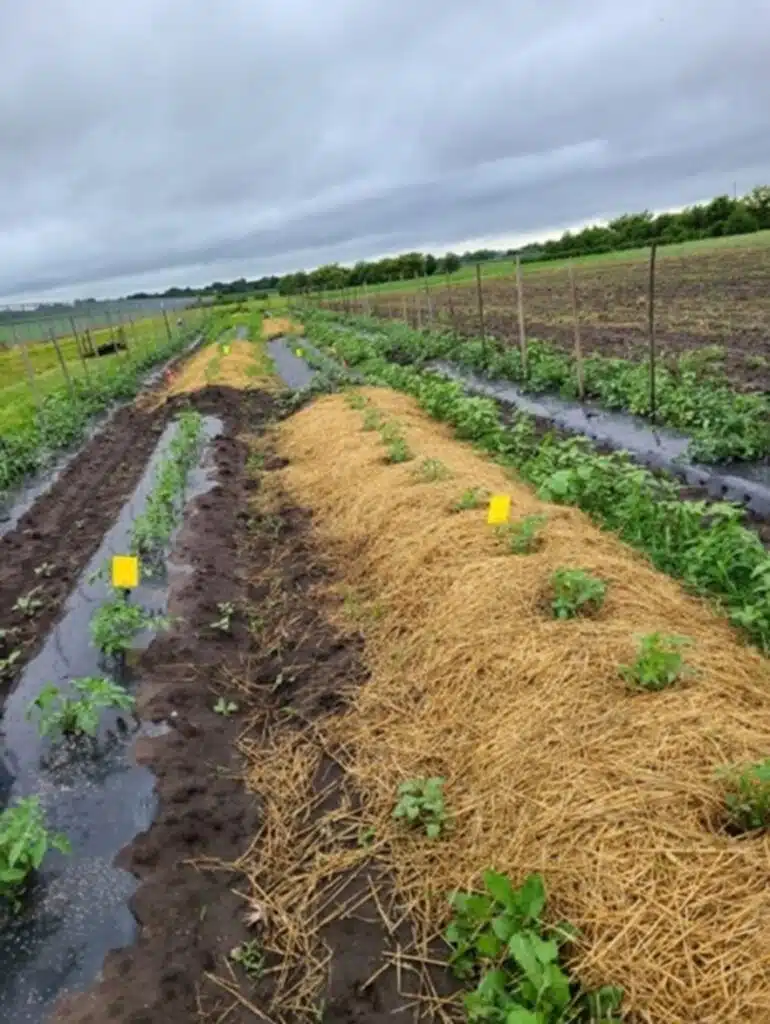Why we Should Go the Regenerative Agriculture Way to Improve Ecosystem Health by George Odumbe Oganda
This guest blog is published as part of the 2022-2023 “Equipping Next Gen Ag and Conservation Leaders” mentorship program hosted by the Mississippi River Network and Green Lands Blue Waters. See all twelve communications projects completed by the mentees here. You can read more about the entire program at https://greenlandsbluewaters.org/next-gen-ag-leaders/
George Odumbe Oganda, Crop Science Master’s student at University of Illinois Urbana-Champaign (IL)
George is interested in regenerative agriculture, including how it can improve soil health and reduce insect pest pressure in specialty crops. Ultimately, he would like to work at agricultural research stations, developing solutions to food security and environmental challenges and providing extension services to growers. He is acutely aware of capital limitations faced by small farmers, and wants to find ways to ensure that they can learn about and benefit from these practices. George has a global vision for making regenerative agriculture more accessible to small-scale farmers, from local farmers in the Midwest to vegetable growers in his home country of Kenya.
George’s Final Communications Project: George Odumbe Oganda completed a blog post titled “Why we should go the Regenerative Agriculture (RA) way to improve ecosystem health.” Read the blog post below.
Join our
COMMUNITY
And Get a Free E-book!
When you sign up as a River Citizen you’ll receive our newsletters and updates, which offer events, activities, and actions you can take to help protect the Mississippi River.
You’ll also get our free e-book, Scenes From Our Mighty Mississippi, an inspiring collection of images featuring the River.

Why we should go the Regenerative Agriculture (RA) way to improve ecosystem health
By George Odumbe Oganda
Projected carbon levels in the atmosphere are set to increase to an astonishing amount. The last thing we need is to have increased greenhouse gases in the atmosphere worsening the climate change impacts that we are currently grappling with. We therefore need behavioral change not only for the sake of quality environment but also to enhance food security in an otherwise exploding human population. Regenerative agriculture has been fronted as set of combined, holistic framework of practices that aim to restore the already degraded soils, continuously renew land, and improve the overall environmental health. With this system of farming principles and practices, we can expect increase in biodiversity, high value soil enrichment, improvement of watersheds and the general ecosystem health.
Now, these activities are surely happening in one way or another even though they are not yet defined as regenerative agriculture. Often times they can be termed as sustainable agriculture methods. To distinguish the two, sustainable practices seek to maintain systems without degrading them. Regenerative agriculture on the other hand first recognizes how natural systems are currently impacted and apply techniques to restore those systems and improve productivity.
Benefits therefore are more future-driven than present. Enhancing soil health will go in hand to make food productivity easier. As we know soils form the baseline of a lot of food production. Keeping and maintaining better soil fertility is a vital recipe for bumper harvests. Incorporating livestock production is another important element of regenerative agriculture. When we practise rotational grazing, we regenerate land in bits and in a more organized way. As one portion of paddock is left rested, it allows for forage crops to recover and deepen their rooting systems. Grazing encourages plants to send out more and deeper roots. Those roots are continually shed off to decompose in the ground, boosting soil biomass and fertility and sequestering(seizing) carbon from the atmosphere.
Carbon sequestration can be considered an indication of good ecosystem health. Retaining carbon in the soil is one major objective of regenerative agriculture that has equal importance when we look at the entire global landscape. Practices like no-till and soil covers protect the soil and enable them to retain as much carbon as possible. No-till by definition is when the soils are continuously left undisturbed or not tilled at all. During planting, seeds can be planted through the remains of previous crops by use of planters, or a seed furrow can be made to place the seeds then furrows closed.
Soil can contain three to four times as much carbon as the atmosphere or terrestrial vegetation. This makes it a great resource in holding carbon. Because of this, carbon sequestration in soil can greatly impact the levels of atmospheric carbon as more carbon will be held in soils than in the atmosphere. The goal indeed is to keep atmospheric carbon to as low levels as possible to aid in regeneration of a healthy universe.
In the book The Organic No-Till Farming Revolution by Andrew Mefferd, Matthew Leon, co-owner of Lovin’ Mama Farm in Amsterdam, New York explained why he switched to no-till practice. This is what he said: “…mainly, we want to grow food in ways that regenerate a healthy planet. I want to do this for the Earth, to help heal the Earth, and it works so well! We’ve evolved our growing methods to address the degradation of the planet due to poor agricultural practices.”
Such thoughts and intentions, underscore the relevance of no-till farming practice as a process of regenerative agriculture for a greater good of the eco-system in general.
Scientific research has backed the idea of growers introducing regenerative agriculture into their production systems. Some studies have argued that incorporating RA techniques like no-till farming can positively affect soil functions. The soil functions are related to organic matter in the soil as a result of increased soil carbon. A particular study reported a 28% increase in organic matter content of soil carbon in no-till system as compared to conventional tillage. By definition, conventional tillage is when soil is vigorously disturbed (tilled) by digging, stirring, or turning it over leaving behind an exposed barren soil. This can further lower the quality of soil as it is vulnerable to soil compaction and erosion.
An increased soil carbon in agricultural soils enhances soil structure, nutrient holding capacity, water retention and fertility which would be beneficial in crop production.
Some of these findings have also been on the crop protection part like in insect pest management. Crop pests will always be a menace to farmers hence measures are always put in place to control or prevent them. Amazingly, some growers feedback on RA has been that when they keep soils healthy, they experience fewer insect pests in their fields. Now this was interesting to know from specialty crops entomology and RA perspective. In light of this, I am currently involved in a research project at the University of Illinois Urbana-Champaign for my master’s thesis where am investigating impacts of RA to soil health and insect pest pressure in tomato and cucumber production.
The experiment is designed to involve two processes of RA that is, no till and use of ground covers which are straw, plastic/landscape fabric and living mulch.

Findings in the first year showed that there were significantly few insect pests in the no-till with straw cover plots than was found in till-plastic plots. This gave an indication that having soil covers like straw does not only protect the soil but improves on insect biodiversity in such a way that insect predators can be harboured in the thick straw. This could be instrumental in biological control of the foliar pests.
It would be any farmers dream to have a system where crop protection is done from within, without having to incur additional costs of insecticide applications. As it is not conclusive yet, further steps to confirm this predator-prey interactions would be to conduct what is referred to as molecular gut content analysis. This is a DNA process to determine if the predators indeed preyed on the above-ground insect pests being that they are in a specific ecosystem as a reason to explain their low numbers in that particular zone. Our crop entomology lab at the University of Illinois Urbana-Champaign is in the process of establishing this linkage.
This goes to show us the need to practise RA if we are to enhance our environmental health and more importantly have a sustained and reliable food production to feed us now and the next generation. Any policies brought forward to incorporate RA in our crop production systems will enhance cementing these practices. Certification on such farms would come in handy to market these practises and improve consumer confidence in RA produce. As it is in organic farming, incentivizing regenerative farming and having consumer trust would go hand in hand. Progress has been made on this; in 2017, the Regenerative Organic Alliance (ROA) created a certification dubbed Regenerative Organic Certified (ROC) to incentivize regenerative practices from within the supply chain. Through this we shall be able to achieve extensive awareness, mass enrolment of regenerative farmers and consumer satisfaction.
In Illinois and throughout the US, RA should continue to inform the food production process. My hope is that, in Africa-Kenya in particular there will be a shift from conventional farming practises to regenerative techniques. Kenya continues to depend on rural agriculture to fill the national food basket. However, the farming methods have remained unchanged for a long time. Intensive tillage forms the main part of land preparation practises especially from the small-scale farmers. A lot of learning and awareness needs to be done indeed to influence this paradigm shift. As demonstrated above, the possibility of a safe and healthy ecosystem for improved food production lies in the perpetual practice of regenerative agriculture in the available farmlands.
Step 1
Become a River Citizen
Yes! The River can count on me!
I am committed to protecting the Mississippi River. Please keep me informed about actions I can take to protect the Mississippi River as a River Citizen, and send me my free e-book!, Scenes From Our Mighty Mississippi!
Step 2
LEARN ABOUT THE RIVER
We protect what we know and love. As a River Citizen, you’ll receive our email newsletter and updates, which offer countless ways to engage with and learn more about the River. You can also follow us on Instagram, Facebook, X (Twitter) , and YouTube, where we share about urgent issues facing the River, such as nutrient pollution, the importance of floodplains and wetlands, and bedrock legislation such as Farm Bill Conservation Programs.
Step 3
Take Action
There are many ways you can jump in and take action for a healthy Mississippi River. Our 10 actions list includes simple steps you can take at any time and wherever you are. Check out our action center for current action alerts, bigger projects we are working on, and ways to get involved.


